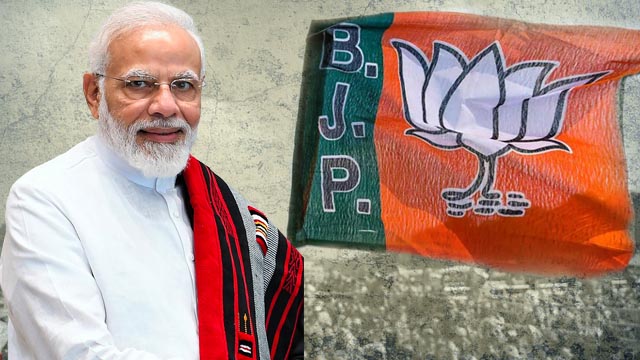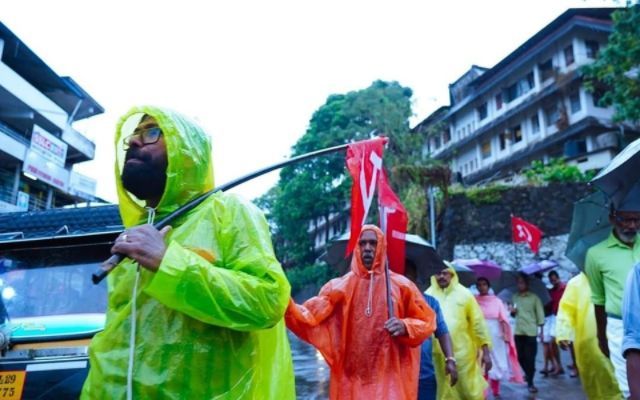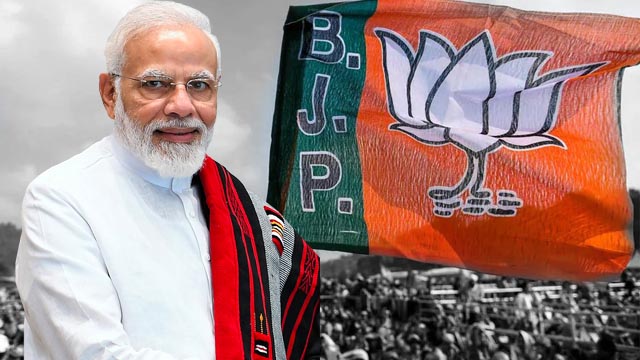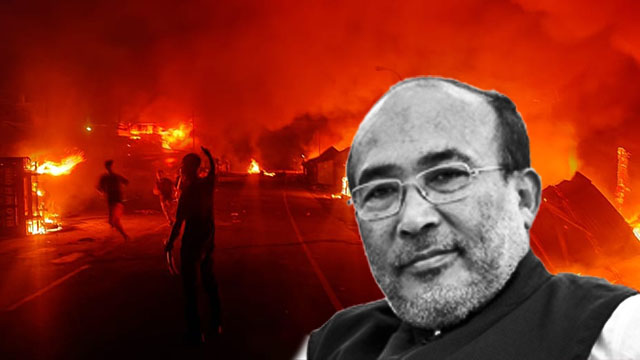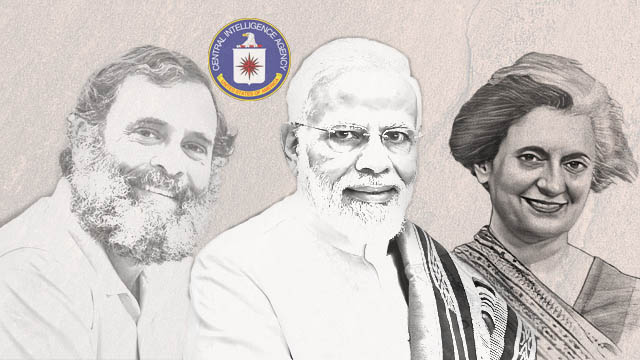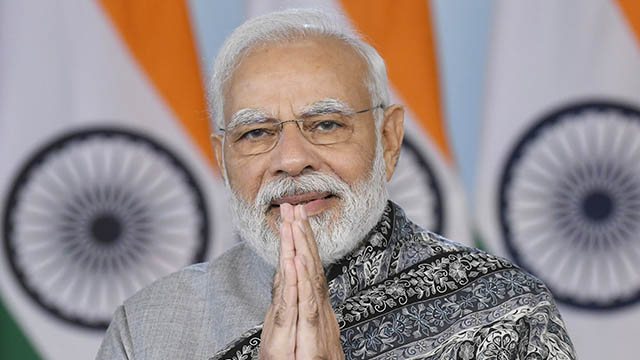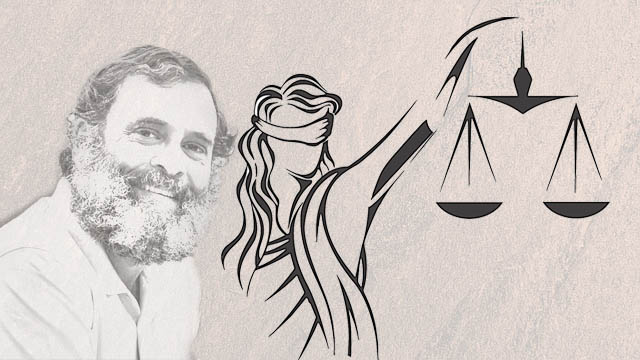The result of the 2023 assembly elections in three northeastern states, Meghalaya, Nagaland and Tripura, may bring relief to India’s ruling Bharatiya Janata Party (BJP). Like other parts of India, it seems the BJP managed to thwart the anti-incumbency sentiments and retained its hegemony in the region, which is geopolitically crucial for India.
The right-wing Hindu nationalist party managed to secure a lead in Tripura, a state it seized from the Communist Party of India (Marxist) [CPI(M)]-led Left Front in 2018 while bagging Nagaland, where it has been a constituent of the all-party government. Meghalaya, earlier ruled by Conrad Sangma’s National People’s Party (NPP), an ally of the BJP, also didn’t vote for a change.
Tripura Assembly election results – morale booster for the BJP
Although the BJP’s vote share fell in Tripura, from 49.83% in the 2018 assembly polls to 38.97% in the 2023 assembly elections, it won 32 seats in the state, three less than its 2018 tally of 35 seats. Its ally, the Indigenous People’s Front of Tripura (IPFT), which won eight seats out of nine it contested in the 2018 Assembly elections, won only one in the 2023 assembly elections. The IPFT’s average vote share fell from 51.72% (in nine constituencies) in the 2018 assembly polls to 1.26% in the 2023 assembly elections.
The magic figure for the majority in the 60-seat Tripura Legislative Assembly is 31 seats, which the BJP has already managed to secure on its own, along with the support of the IPFT. The CPI(M)-led Left Front’s alliance with the Congress party (INC) failed to help it change its fate in the state that remained its bastion for decades. The INC won three seats with a total 8.56% vote share in the 2023 assembly elections in Tripura vis-à-vis zero seats and a 1.82% vote share in the 2018 assembly elections.
The CPI(M)-led Left Front won 11 seats in the 2023 assembly polls vis-à-vis 16 in the 2018 assembly elections. Its vote share fell from 43.26% in the 2018 Tripura assembly elections to 26.8% in the 2023 assembly elections. Out of this vote share, the CPI(M) alone got 24.62% of the votes. Although the CPI(M)-led Left Front didn’t contest all seats in the 2023 elections, unlike in 2018, and gave 13 seats to the INC, the fall in the left’s vote share shows that even though the left supporters voted for the INC, the latter’s support didn’t provide any significant boost to the left’s electoral fortune.
This victory of the BJP in the 2023 assembly elections in Tripura is a morale booster for outgoing Chief Minister Manik Saha, who replaced Biplab Deb, the man who managed to topple the two-decade-long Left Front government in 2018. Prime Minister Narendra Modi and his close confidante, Union Home Minister Amit Shah, visited Tripura repeatedly and spearheaded the campaign against the Left Front-INC alliance.
In the last five years, the BJP has developed a large-scale organisation in Tripura, riding on the support of the Rashtriya Swayamsevak Sangh (RSS)—the party’s ideological parent—and other Hindutva-driven organisations. The RSS cadre base soon outnumbered the CPI(M), which has been rendered marginalised in the state. The INC lacked any strong organisational presence in the state but had the potential to cut into the anti-BJP votes, which made the Left Front ally with it.
The coming together of these two political forces, once bitter enemies in the state, helped the BJP to project the alliance as an opportunist one. Modi criticised the alliance as “Kerala Mein Kusti, Tripura Mein Dosti” (they wrestle in Kerala and ally in Tripura) and sought votes to carry on the “development” bandwagon in the state. The infrastructure developments promised by the BJP in 2018 are yet to materialise or create employment opportunities for the people, but the lack of an alternative vision of the Opposition helped the BJP to cover up the gap between its promises and delivery.
West Bengal’s ruling Trinamool Congress (AITC) also forayed in the Tripura Assembly elections, after suffering a debacle in the local government elections held in 2021. The AITC didn’t manage to win a single seat and got only 0.88% of the votes. The Left Front and INC alliance alleged that the AITC’s entry into the 2023 assembly elections in Tripura was to help the BJP win by cutting the Opposition votes.
The bigger challenge faced by the BJP was from the newly-formed outfit Tipra Motha Party (TMP). The party, which seeks a new indigenous people’s state carved out of Tripura, managed to win 13 seats. The TMP didn’t ally with the Left Front and INC as neither promised it their support for a new state, which could affect their voter base among Bengalis, who migrated to the former princely state following India’s partition in 1947 and changed the demographic equation.
Even though the BJP managed to secure the magic figure, it will be a very tightrope walk for Saha in the state. If the TMP, the Left Front and the INC forge a post-poll alliance, then any defections from the BJP can change the power equation. However, political observers of Tripura fear that any poaching exercise by the BJP may further weaken the Opposition.
The onus of protecting the Opposition seats falls on the INC, which has a historic record of the highest defections. The TMP legislators may also defect to the BJP or decide to support it if the latter can hang an olive branch of considering its demand for a new state before its leader, Pradyot Bikram Manikya Deb Barma.
The Nagaland Assembly elections
Nagaland has been a hotbed of rebellion since the 1950s and is one of the few states in India where the controversial Armed Forces (Special Powers) Act (AFSPA) remains enforced. Alike its rebellion, the politics of Nagaland is also full of surprising factors. The Hindutva-driven BJP’s continuous existence as a ruling coalition member in the Christian-majority state has been a major surprising factor for political observers.
The BJP in Nagaland has been a part of its ruling North-East Democratic Alliance (NEDA), which was formed to help the Hindutva-driven party to foray into north-eastern politics in alliance with local strongmen.
The Nationalist Democratic Progressive Party (NDPP), led by the outgoing chief minister Neiphiu Rio, has been the major constituent of the NEDA in Nagaland. The Opposition, Naga People’s Front (NPF)—a former ally of the BJP—led by Kuzholuzo Neinu, the INC under Kewekhape Therie, and the Janata Dal (United) [JD(U)] under Senchumo Lotha, fought the multi-faceted election for the 60-seat Nagaland Assembly separately.
The NDPP and the BJP alliance went for a 40:20 seat-sharing ratio to contest the 2023 assembly elections in Nagaland. Out of the 40 seats it contested, the NDPP won 25, while the BJP won 12 out of 20. The coalition easily crossed the magic figure for the majority, ie 31 seats, by winning 37 seats.
BJP’s allies Lok Janshakti Party (Ram Vilas) (LJP-RV) and the Republican Party of India (Athawale) (RPI-A) won two seats each by contesting separately. If these four legislators support the NEDA, then the ruling coalition will have 41 seats in the Nagaland Assembly.
The Opposition INC won no seats. The JD(U) won one seat, the Nationalist Congress Party (NCP) won seven seats, the National People’s Party (NPP) won five seats, and the NPF won two seats. It has been the worst performance by the NPF, which ruled Nagaland in coalition with the BJP from 2003 to 2018. The NPF had emerged as the largest party in the 2018 Nagaland Assembly election with 27 seats, but the BJP duped it and formed a government with the NDPP. Lately, 21 legislators from the NPF switched to the NDPP, leaving only four to the party’s fold.
Although the BJP’s return to power in coalition with the NDPP isn’t surprising in Nagaland, it’s yet to be seen how the party manages to deal with sensitive issues like the Naga peace talks with the rebel outfits and deals with the demand to scrap the AFSPA from Nagaland, which even got the support of Rio. As the Naga peace talks are already in a very precarious stalemate, it’s not going to be easy for the NEDA to achieve any real success in resolving the seven-decade-long problem.
Meghalaya Assembly elections
The Meghalaya Assembly election results didn’t give a clear majority to any party. Sangma’s NPP is the largest party in the house with 26 out of the 59 contested seats. It’s followed by the United Democratic Party (UDP), which earlier left the NEDA, with 11 seats. The INC won only five seats, which is equal to what the AITC won in its maiden contest in the hill state.
The BJP, which managed to win only two seats, and the UDP are likely to support the NPP to form the next government under Sangma’s leadership. The Hill State People’s Democratic Party (HSPDP) will remain in the alliance as a NEDA constituent. The HSPDP has won two seats in the 2023 assembly elections.
The political implications of the 2023 assembly elections in the north-east
The BJP has managed to emerge as the victorious national party from the equations exhibited by the results of the 2023 assembly elections held in the three northeastern states. Apart from retaining its rule in Tripura, it will also be in the ruling coalition in the Christian-majority Meghalaya and Nagaland.
The Opposition needs to review how Modi’s BJP managed to override anti-incumbency in the north-east states and retain its hold in the region, where it was politically non-existent, except in Assam and Nagaland, until a few years ago. Moreover, the tendency of the political parties in the north-east to join the ruling coalition, instead of being in the opposition, also helped the BJP in these states.
Prime Minister Modi expressed his gratitude towards the voters for exhibiting faith in the BJP, although the Hindutva-driven right-wing party didn’t win many seats outside Tripura. However, the prime minister used the INC’s loss in the 2023 assembly elections in Meghalaya, Nagaland and Tripura to attack the party and called its attitude towards the people a problem.
The INC continues on its journey towards total decimation in the northeast. By allying with the CPI(M)-led Left Front, the INC managed to win seats in the Tripura Assembly, however, it ate upon the left votes but didn’t help the latter to win any more seats. The inability of both the INC and the left to ally with the TMP in Tripura helped the BJP, as collectively the TMP + Left + INC alliance could have bagged more votes as per the election data.
The political implications of the 2023 assembly elections in the three northeastern states will neither be far-reaching nor remain confined to the region. However, it will bolster the BJP’s spirit before the Mizoram assembly elections, where the party wants to make inroads, along with the results of the Lok Sabha elections scheduled in 2024, in which the BJP can retain its absolute hegemony in the region unless some major political development takes place.
Tanmoy Ibrahim is a journalist who writes extensively on geopolitics and political economy. During his two-decade-long career, he has written extensively on the economic aspects behind the rise of the ultra-right forces and communalism in India. A life-long student of the dynamic praxis of geopolitics, he emphasises the need for a multipolar world with multilateral ties for a peaceful future for all.

